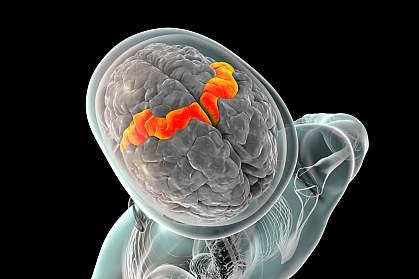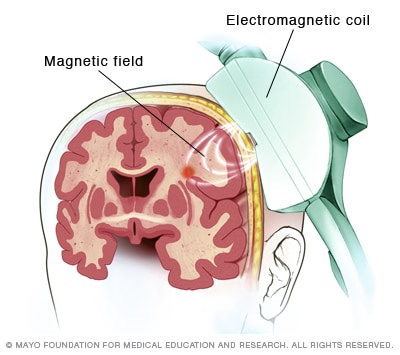What TMS is like
Magnets go click click click
There are two nuclear options for treating depression: Ketamine and TMS; This post is about the latter.
TMS stands for Transcranial Magnetic Stimulation. Basically, it fixes depression via magnets, which is about the second or third most magical things that magnets can do.
I don’t know a whole lot about the neuroscience - this post isn’t about the how or the why. It’s from the perspective of a patient, and it’s about the what.
What is it like to get TMS?
TMS
The Gatekeeping
For Reasons™, doctors like to gatekeep access to treatments, and TMS is no different. To be eligible, you generally have to have tried multiple antidepressants for several years and had them not work or stop working. Keep in mind that, while safe, most antidepressants involve altering your brain chemistry and do have side effects.
Since TMS is non-invasive, doesn’t involve any drugs, and has basically little to no risk or side effects, doctors want to make sure that you’ve tried everything else first.
(I suppose if the American healthcare system made sense, a lot of people would be out of the job.)
In any case, when I applied for the treatment (after talking to my psychiatrist about it), I went to a clinic that does the treatment, and in the first appointment went through the standard rigmarole with insurance information and medical history. In order to be eligible, I had to complete a form indicating my history with antidepressants (I’ve tried several), and some other surveys to indicate how depressed I was (very).
After being informed I was a good candidate for the treatment, I scheduled an initial session with a doctor, which would include a motor threshold test.
Motor Threshold Test
Given that the entire treatment revolves around stimulating one’s brain with a magnetic field, the question comes up: how do they know what region of the brain to stimulate, and where it is in your skull? Also, how do they know how powerful to make the magnetic field?
The answer does not involve an MRI, even though that is also a medical procedure involving magnets that go click.
Instead, they do something called a Motor Threshold Test. Basically, there’s a band of the brain responsible for motor function:
The magnetic coil in the TMS machine is placed next to your head along this motor function area:
And then they activate the machine, zapping your brain. Because specific areas of this band are responsible for specific motor functions, they move the machine around until they find the band (they’ll know they found it when you start twitching when they zap you). It’s a strange feeling, a little like having your reflexes tested at the doctor’s: an external stimulus is applied to you, and your body moves involuntarily in response.
Once the motor function area is found, the machine is moved along it until a magnetic pulse causes a very slight - but visible - twitch in your hand. (Since I was getting TMS on the left side of my brain, the twitch was in my right hand; had I gotten TMS on the right side of my brain, the twitch would have been on my left. As far as I’ve been told, left-TMS is for depression, right-TMS is for anxiety. Why that’s the case, I have no idea.)
Locating that point allows the doctor to calibrate the machine, both in location and magnetic field strength, and then they move it a set distance away from that point to reach the area that will be stimulated for the treatment.
I wound up doing two Motor Threshold Tests, once at the beginning and another halfway through (this is an ordinary, scheduled adjustment). After the second the doctor increased the strength of the magnetic field by about 10%.
The Treatment
The treatment itself is straightforward but onerous.
The Schedule
My TMS treatment consisted of 36 treatments, scheduled once a day, five days a week, for seven weeks. I was told that sometimes the last few treatments are spread out a bit more, but the doctor didn’t recommend that for me.
The first 25 treatments were 18 minutes long; the latter 10 treatments 25 minutes long (plus the time to get you set up in the chair and whatnot). Apparently you can veto the extra treatment length if you want, but given that you’re already in the chair I didn’t see a reason to.
In summary, every weekday for almost two months I had to drive to the TMS office, get set up in the chair, receive the treatment, and then drive home (or to work, or wherever). All told it was about an hour a day, five days a week, for seven weeks. Which was kind of a big ask for someone who’s already depressed and having trouble doing anything.
I found myself glad that I didn’t really think through just how big of a commitment it was before I started, because I might not have had the motivation to start if I’d known what I was getting into.
The Experience
I go in to the office, one of the technicians comes and gets me, and we go into a small room containing The Chair. It’s pretty similar to a dentist’s chair, and I’ll sit down and scoot around while the technicians lines up some kind of red light with the corner of my eye.
Once I’m in place, there are two ways that my head is secured in place:
A single-use plastic strip shaped like an upside down T, with a sticky patch in the intersection of the T that goes just above my eyebrows. The three prongs of the T are then secured behind my head.
A headrest cushion on the right side of my head, and the magnet itself on the left.
The technician checks in, and assuming I’m comfortable, begins the treatment.
The basic experience is:
The machine makes a sound like the windows startup noise
A cycle of about thirty quick pulses lasting about 3-4 seconds
About 10-12 seconds of nothing
Repeated for 18 minutes.
The technician offered me some soft-start options: the first few cycles at lower power, increasing each cycle until you get to whatever power level your Motor Threshold Test indicated. There was also an option for the first few pulses of each individual cycle to be softer.
For the first session, they set the magnetic field to 80% of the level we’d found with the Motor Threshold Test, then the second session was at 90%, the third at 100%, the fourth at 110%, and the fifth at 120%. I was told that 120% is the standard, given variability in how the brain responds to the magnetic field.
The Sensation
The doctor, in the initial appointment, described the sensation of the magnetic pulses as “tapping”, and that isn’t entirely inaccurate. Each pulse - each click - of the magnet feels a bit like a finger knocking poking your skull.
Given the speed at which the pulses occur, comparisons to woodpeckers have been made.
While the sensation is one of tapping, it’s important to note that nothing is actually tapping you; what you’re feeling is muscles spasming in response to being electromagnetically stimulated. Depending on the strength of the pulse, this goes from ‘annoying’ to ‘headache-inducing’.
At the higher power pulses, my skull would vibrate a bit, which made my jaw to chatter up and down. This led to some minor jaw pain, although it disappeared over the weekends when I wasn’t undergoing treatment. I got in the habit of sticking my tongue between my teeth as something of a shock absorber, and that seemed to help as well.
With this tapping sensation, I found it difficult to concentrate on anything while the treatment was ongoing; my clinic had a TV available if I wanted to watch it, but I generally didn’t.
I also found that breathing in or out while the magnet was going was uncomfortable, and so tried to time my breathing such that I was doing neither while the machine was pulsing.
Results
TMS worked for me. I don’t know how long the treatment is going to last (I was told that it’s supposed to last at least a year, with it lasting indefinitely for many), but it absolutely pulled me out of a very bad depression.
To use my percentage model, I went from ~15% to ~80% over the course of seven weeks. Interestingly enough, the improvement was pretty steady; I gained around 8-10% per week (which is part of how I was able to quantify the percentages).
It’s a commonly acknowledged idea that slow changes over time are more difficult to notice than fast, abrupt changes, but I am wildly better-off (mentally) than I was in August, and the difference is stark to me.
Conclusion
Depression sucks.
A lot.
I’ve ridden the antidepressant carousel all the way around, and while sometimes they’re miracle drugs, plenty of times they’re a pain in the ass. They have side effects, they take four to six weeks to build up in your body and therefore do anything, you have to keep getting prescriptions filled and refilled…it’s a pain.
TMS, on the other hand, is a large and exhausting up-front investment. You have to go in five days a week. There’s driving (there and back), logistics (you try to schedule that and a full-time job), and the annoyance of sitting in a chair while a magnet makes loud clicking noises and rattles your skull and rewires your brain.
But it works (for me).
And that makes it worth it.
I expect, just because life has taught me to be pessimistic in this, that the TMS will wear off in a year for me. This begged the question: if I had to do this again, or even in perpetuity - spend seven weeks a year getting TMS treatment for the rest of my life - would I?
Yes. A thousand times yes.
A Kodak moment might be priceless, but a functioning brain is worth a whole lot to me, and I can actually sell the labor the latter produces for money.
I’m not sponsored in any way, or telling anyone what to do. But it’s useful to know that there is another option for depression (and OCD and anxiety, which TMS is also used to treat). One that is powerful and reasonably fast and works.


